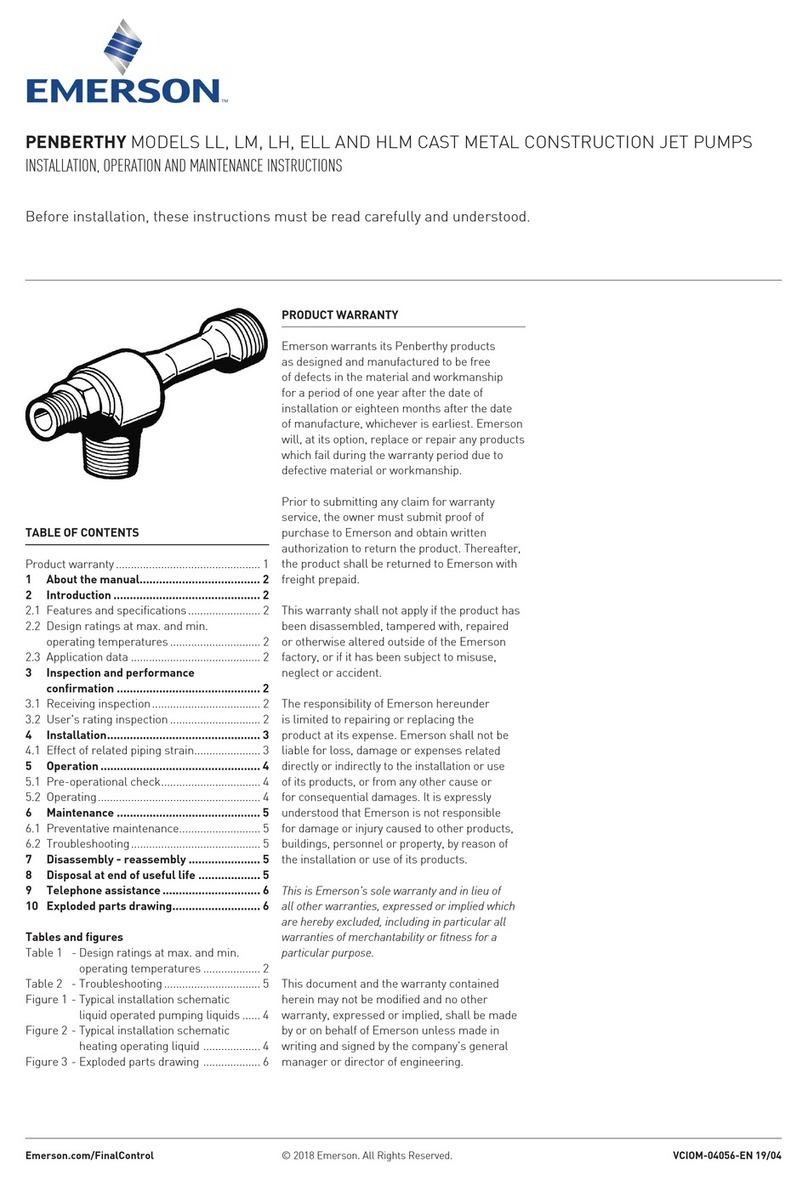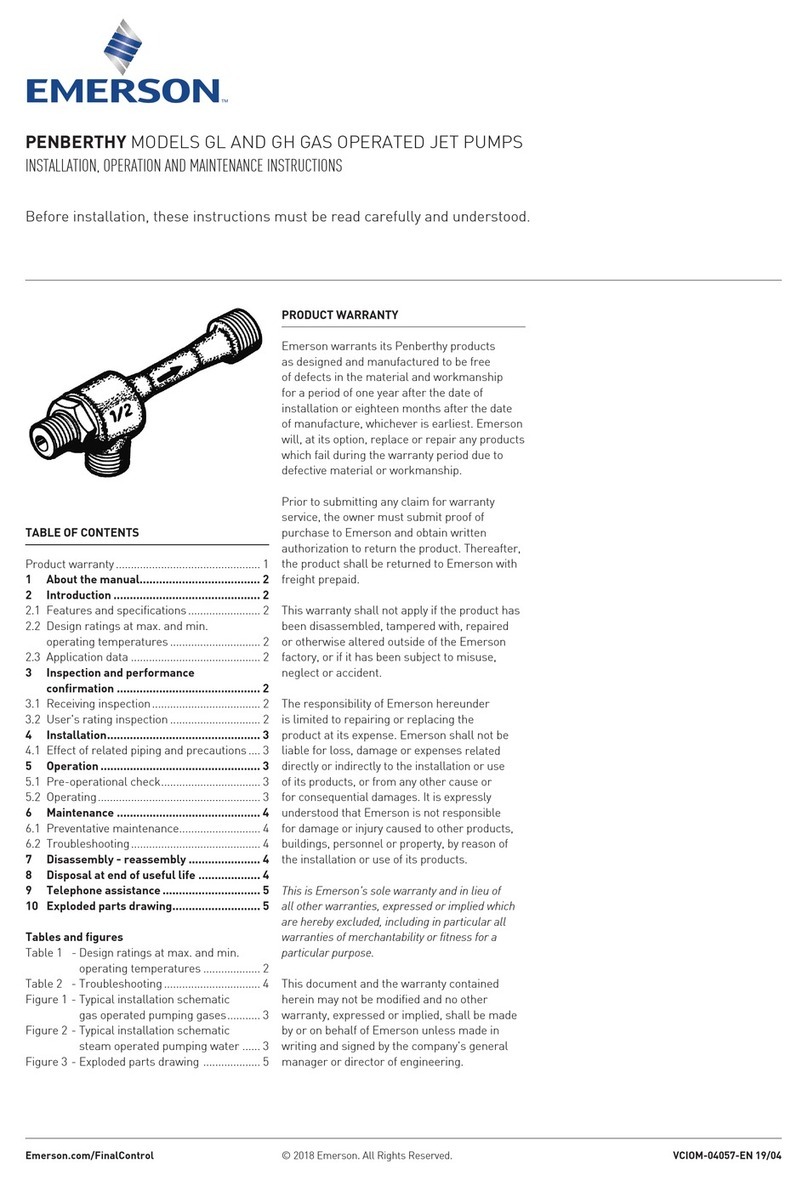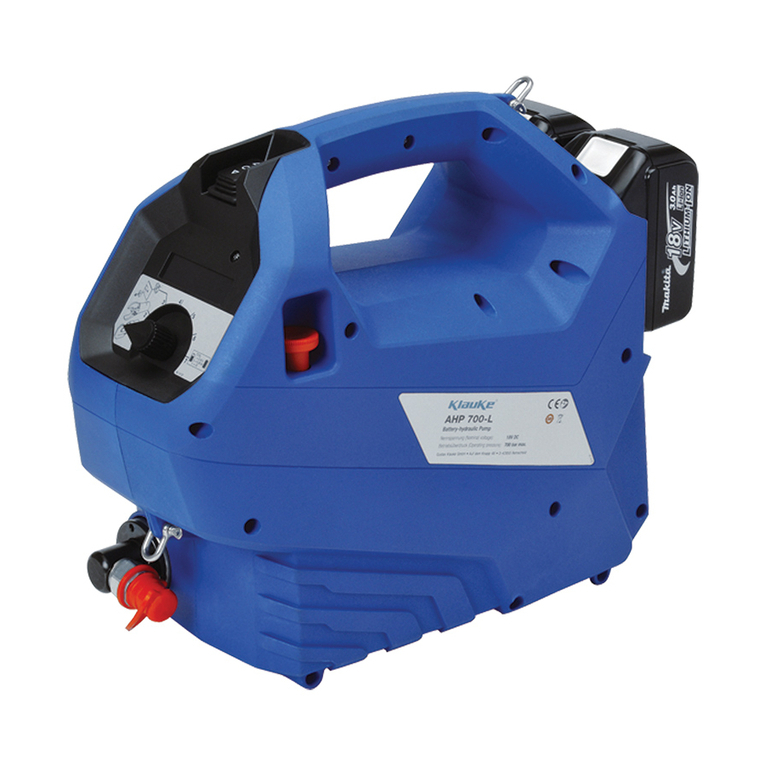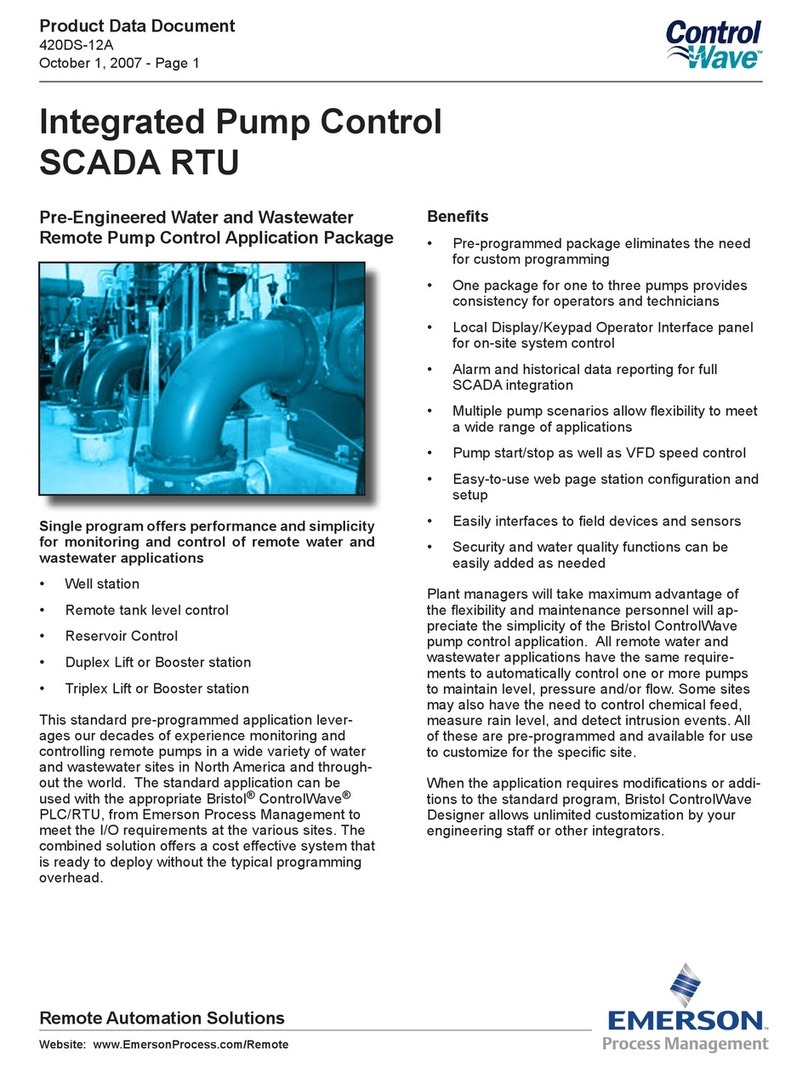
2
YARWAY CONDENSAVER™ SERIES STEAM CONDENSATE RETURN PUMPS
INSTALLATION, OPERATION AND MAINTENANCE INSTRUCTIONS
COMMISSIONING
1. Open the motive pressure line block valve.
If steam, ensure that the steam trap
is functional.
2. Open the block valves on the inlet and outlet
condensate lines to commission the system.
NOTE
Proper operation can be verified by observing the level
in the sight glass. During the fill cycle the level should
rise and during the discharge cycle, it should fall.
WARNING
Hot discharge from this product may cause severe
burns. Discharge must be piped away or directed
so that persons in the vicinity are not endangered.
This product must be isolated, vented and cool to
the touch before repairing or inspecting.
MAINTENANCE
The Yarway CondenSaver™ Series does not
require frequent service. It is recommended,
however that routine maintenance be
performed at least on a yearly basis, depending
on the quality of the liquid being pumped.
During this service, the system including
strainers, tanks, valves and piping should be
flushed or cleaned to prevent the accumulation
of rust and other contaminants from fouling
the check valves or the working mechanism of
the pump.
NOTE
Any malfunction of this product must be reported to
the service department. Repare made to the product
by unauthorized personnel will void the warranty.
DISASSEMBLY
1. Remove the entire internal operating
mechanism from the pump by removing the
eight hex bolts (19)
2. Remove the operating mechanism from
the top flange (15) by removing the two
hex bolts (19). The valve internals will come
out with the valve actuator plate (9). Discard
the valve internals.
3. Remove and discard the valve bodies from
the top flange (15).
4. Clean any debris from the operating
mechanism and the top flange (15). Inspect
the moving parts. Replace any worn or
damaged components.
REASSEMBLY
1. Install the new valve bodies. The body with
the captivated ball is the inlet valve body and
must be installed in the hole ported to the
½ in. NPT connection. Torque the bodies to
30 to 40 ft-lbs (41 to 54 N•m).
2. Place the new valve internals in the slots
on the valve actuator plate (9). The valve
internal for the inlet plate has the narrow tip.
Reinstall the operating mechanism to the
top flange (15) with the two hex bolts (19).
Torque to 40 to 50 ft-lbs (54 to 68 N•m)
3. Check the operating mechanism for proper
tripping operation by carefully raising and
lowering the float (1). All parts should move
freely and the valves should change position
with a snap action.
4. Reassemble the pump using a new gasket.
A thread lubricant should be applied to the
threads of the eight hex bolts. Torque to
70 to 75 ft-lbs (95 to 101 N•m)
TROUBLESHOOTING
In the event of operational difficulties, refer to
Table 1 to identify and correct the problem.
TABLE 1. TROUBLESHOOTING GUIDE
Symptom Possible Cause Corrective Action
Pump does not deliver rated capacity Insufficient filling head Raise filling head
Clogged strainer Clean the strainer
Insufficient motive pressure Increase motive pressure
Back pressure too high Reduce back pressure
Inlet check valve is leaking Clean or replace valve
Pump fills but does not cycle Damage float Replace float
Broken Spring Replace spring
Mechanism jammed with debris Clean the pump and free up the mechanism
Constant discharge of steam or air Valves have a seat leakage Replace the inlet and exhaust valves
Liquid is being discharged from the exhaust port Damage float Replace float
Broken Spring Replace spring
Mechanism jammed with debris Clean the pump and free up the mechanism




























